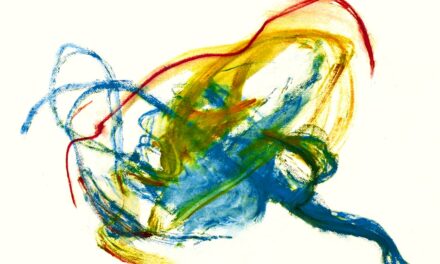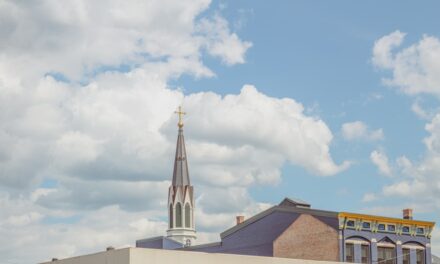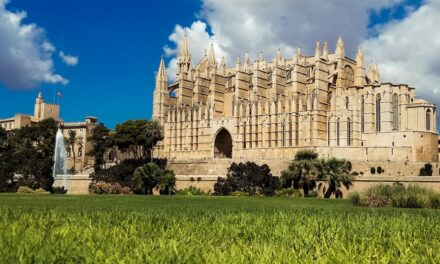The Renaissance period, which spanned from the 14th to the 17th century, was an era of significant cultural and artistic transformation in Europe. The term ‘Renaissance’ means ‘rebirth’, and this epoch marked a resurgence of interest in the art and learning of ancient Greece and Rome. The origins of Renaissance art can be traced to the city-states of Italy, particularly Florence, where a newfound emphasis on humanism and individualism began to shape artistic expression.
This shift in focus from the divine to the human form was a key characteristic of Renaissance art, as artists endeavoured to capture the beauty and complexity of the human experience. The rise of wealthy merchant families in Italy also played a crucial role in the development of Renaissance art. These patrons of the arts, such as the Medici family, provided financial support to artists and commissioned works that celebrated the human form and the natural world.
This patronage allowed artists to explore new techniques and materials, leading to a flourishing of creativity and innovation. The combination of humanist ideals and patronage laid the foundation for the emergence of Renaissance art, which would go on to have a profound impact on the artistic traditions of Europe and beyond.
Summary
- Renaissance art originated in Italy during the 14th century and spread across Europe, marking a shift from the medieval period to a focus on humanism and classical antiquity.
- Characteristics of Renaissance art include a focus on realism, perspective, and the use of light and shadow to create depth and dimension in paintings and sculptures.
- Key artists of Renaissance art include Leonardo da Vinci, Michelangelo, and Raphael, known for their iconic works such as the Mona Lisa, David, and The School of Athens.
- Humanism, a cultural and intellectual movement, heavily influenced Renaissance art by promoting the study of classical texts, individualism, and the celebration of human potential.
- Technological advancements such as the invention of oil painting, linear perspective, and the printing press revolutionized the production and distribution of art during the Renaissance period.
- Patronage played a crucial role in the development of Renaissance art, with wealthy individuals and institutions commissioning artists to create works that reflected their status and ideals.
- The legacy of Renaissance art can be seen in its lasting impact on Western art, architecture, and culture, as well as its influence on future artistic movements such as Baroque and Neoclassicism.
Characteristics of Renaissance Art
Realism and Naturalism
One of the most notable characteristics of Renaissance art is its focus on realism and naturalism. Artists sought to depict the world around them with greater accuracy, using techniques such as linear perspective and chiaroscuro to create depth and dimension in their works.
The Human Form
Another key characteristic of Renaissance art is its emphasis on the human form. Artists such as Leonardo da Vinci and Michelangelo sought to capture the beauty and complexity of the human body, exploring anatomy and movement in their works. This focus on the individual and the human experience reflected the humanist ideals that were central to the Renaissance period.
Classical Influences
In addition, Renaissance art often featured classical themes and subjects, drawing inspiration from the mythology and history of ancient Greece and Rome. This interest in classical antiquity led to a revival of classical forms and motifs, as well as a renewed appreciation for the achievements of ancient civilisations.
Key Artists and Works of Renaissance Art
The Renaissance period produced a wealth of talented artists whose works continue to be celebrated for their beauty and innovation. One of the most iconic figures of Renaissance art is Leonardo da Vinci, whose paintings such as the “Mona Lisa” and “The Last Supper” are renowned for their technical mastery and enigmatic beauty. Da Vinci’s keen interest in science and anatomy also informed his artistic practice, leading to a greater understanding of the human form and its representation in art.
Another towering figure of Renaissance art is Michelangelo, whose sculptures such as “David” and “Pieta” are considered masterpieces of the period. Michelangelo’s ability to capture the human form with such grace and power set a new standard for artistic achievement, influencing generations of artists to come. In addition to his sculptural work, Michelangelo was also a prolific painter, creating frescoes such as the “Sistine Chapel ceiling,” which remains one of the most famous works of art in history.
Other notable artists of the Renaissance period include Raphael, whose paintings such as “The School of Athens” exemplify the harmony and balance characteristic of High Renaissance art, as well as Titian, whose use of color and composition set new standards for Venetian painting. These artists, along with many others, contributed to a rich and diverse artistic landscape that continues to inspire and captivate audiences around the world.
Influence of Humanism on Renaissance Art
Humanism was a central intellectual movement of the Renaissance period, emphasizing the value and potential of human beings and their achievements. This focus on human experience and individualism had a profound impact on the development of Renaissance art, shaping its themes, subjects, and techniques. Humanist ideals encouraged artists to explore the natural world and the human form with greater depth and sensitivity, leading to a new emphasis on realism and naturalism in art.
In addition to its impact on artistic practice, humanism also influenced the subject matter of Renaissance art. Artists began to depict scenes from everyday life, as well as classical mythology and history, reflecting a broader interest in human experience and achievement. This shift towards human-centered themes marked a departure from the religious focus of medieval art, reflecting the changing attitudes and values of Renaissance society.
Furthermore, humanism played a role in shaping the patronage system that supported Renaissance art. Wealthy patrons such as the Medici family were not only interested in commissioning religious works but also sought to celebrate humanist ideals through their support of artists. This patronage allowed artists to explore new themes and techniques, leading to a flourishing of creativity and innovation that defined the Renaissance period.
Technological Advancements in Renaissance Art
The Renaissance period was a time of great technological innovation, which had a significant impact on the development of art. One of the most important advancements was the invention of linear perspective, which allowed artists to create more realistic and immersive representations of space. This technique, pioneered by artists such as Filippo Brunelleschi, revolutionized the way that space was depicted in art, leading to a greater sense of depth and dimension in paintings and drawings.
Another key technological advancement was the development of oil painting techniques, which allowed artists to achieve greater richness and luminosity in their works. This shift from tempera to oil paint enabled artists to create more detailed and nuanced compositions, leading to a greater emphasis on light, shadow, and color in their paintings. The use of oil paint also allowed for greater flexibility and control in artistic expression, leading to a new level of technical mastery in Renaissance art.
In addition to these advancements, the invention of printing technology had a profound impact on the dissemination of artistic ideas and imagery. The development of woodcut and engraving techniques allowed for the mass production of prints, making art more accessible to a wider audience. This increased circulation of artistic imagery contributed to a greater exchange of ideas and styles across Europe, leading to a more interconnected artistic community.
The Role of Patronage in Renaissance Art
Financial Support and Encouragement
Patronage played a vital role in the development of Renaissance art, providing financial backing and encouragement to artists as they pursued their creative visions. Wealthy individuals and families, such as the Medici in Florence, were amongst the most important patrons of the arts during this period, commissioning works that celebrated humanist ideals and reflected their own status and influence. This patronage allowed artists to focus on their craft without having to worry about financial concerns, enabling them to explore new techniques and materials with greater freedom.
A Flourishing of Creativity and Innovation
This support also led to a flourishing of creativity and innovation, as artists were able to push the boundaries of artistic expression without fear of financial hardship. With the financial security provided by their patrons, artists were able to take risks and experiment with new styles and techniques, leading to a diverse range of artistic expressions.
Shaping the Subject Matter and Themes
In addition to financial support, patrons also played a role in shaping the subject matter and themes of Renaissance art. Many patrons sought to celebrate their own achievements or promote specific ideals through their commissions, leading to a diverse range of artistic expressions that reflected the values and interests of their patrons. This close relationship between patron and artist resulted in works of art that not only showcased the artist’s skill, but also reflected the patron’s tastes and aspirations.
Legacy of Renaissance Art
The legacy of Renaissance art is profound and far-reaching, with its influence continuing to be felt in artistic traditions around the world. The emphasis on realism, naturalism, and humanism that defined Renaissance art set new standards for artistic expression, shaping the course of Western art for centuries to come. The techniques and innovations developed during the Renaissance period continue to be studied and admired by artists and scholars today, serving as a foundation for modern artistic practice.
The legacy of Renaissance art can be seen in everything from portraiture to landscape painting, with its influence evident in movements such as Baroque, Neoclassicism, and beyond. Furthermore, the themes and subjects explored by Renaissance artists continue to resonate with contemporary audiences, reflecting universal aspects of human experience that transcend time and place. The enduring appeal of works such as Leonardo da Vinci’s “Mona Lisa” or Michelangelo’s “David” speaks to the timeless power of Renaissance art to captivate and inspire viewers.
In conclusion, Renaissance art represents a pivotal moment in the history of Western culture, marking a profound shift in artistic expression that continues to shape our understanding of beauty, creativity, and human potential. The legacy of this period lives on through its masterpieces, its innovative techniques, and its enduring influence on artistic practice around the world.
If you are interested in learning more about different art movements, you may want to check out an article on Impressionism. This art movement, which emerged in the 19th century, focused on capturing the fleeting effects of light and atmosphere in paintings. It was a significant departure from the traditional techniques of the Renaissance period and had a profound impact on the development of modern art.
FAQs
What is Renaissance art?
Renaissance art refers to the period of European history between the 14th and 17th centuries, characterized by a renewed interest in classical art, architecture, and learning. It is known for its focus on realism, perspective, and humanism.
What are the key characteristics of Renaissance art?
Key characteristics of Renaissance art include a focus on realism, perspective, and human anatomy. Artists also used techniques such as chiaroscuro (the use of light and shadow) and sfumato (blending of colours) to create depth and dimension in their works.
Who were some of the most famous Renaissance artists?
Some of the most famous Renaissance artists include Leonardo da Vinci, Michelangelo, Raphael, Donatello, and Sandro Botticelli. These artists made significant contributions to the development of Renaissance art and are known for their iconic works.
What were the major themes in Renaissance art?
Major themes in Renaissance art included religious subjects, classical mythology, portraits, and landscapes. Artists also depicted scenes from everyday life and focused on the beauty of the human form.
How did Renaissance art influence the world?
Renaissance art had a profound influence on the world, shaping the development of art, architecture, and culture for centuries to come. It marked a shift towards humanism and a renewed interest in the classical world, laying the foundation for the artistic and intellectual achievements of the modern era.



